Abstract
Four adult humans were asked to asked to “find” and talk about a particular topic to a person in an adjoining room, and were instructed that they would hear a short beep (the only form of reply from the other person) when they were talking about the topic, or were “close” to the topic. In Session 1, the experimenter in the adjoining room presented the beeps in the manner of shaping, or the differential reinforcement of successive approximations, “toward” the designated topic. In Session 2, the same conditions were in effect but the experimenter was unable to hear the subject and the beeps were presented noncontingently in a way that roughly matched the frequency and distribution of presentations in Session 1. In Session 3, shaping conditions were again in effect but with a different topic than that designated for Session 1. Audio recordings were transcribed in a way that was designed to show the progress of shaping over time. These and additional forms of supporting data and accompanying rationale are presented and discussed in detail. Issues raised by the methodology and results of the experiment include the nature of the verbal operant, superstitious verbal behavior, and a variety of methodological issues relevant to the experimental analysis of ongoing or continuous verbal behavior.
Full text
PDF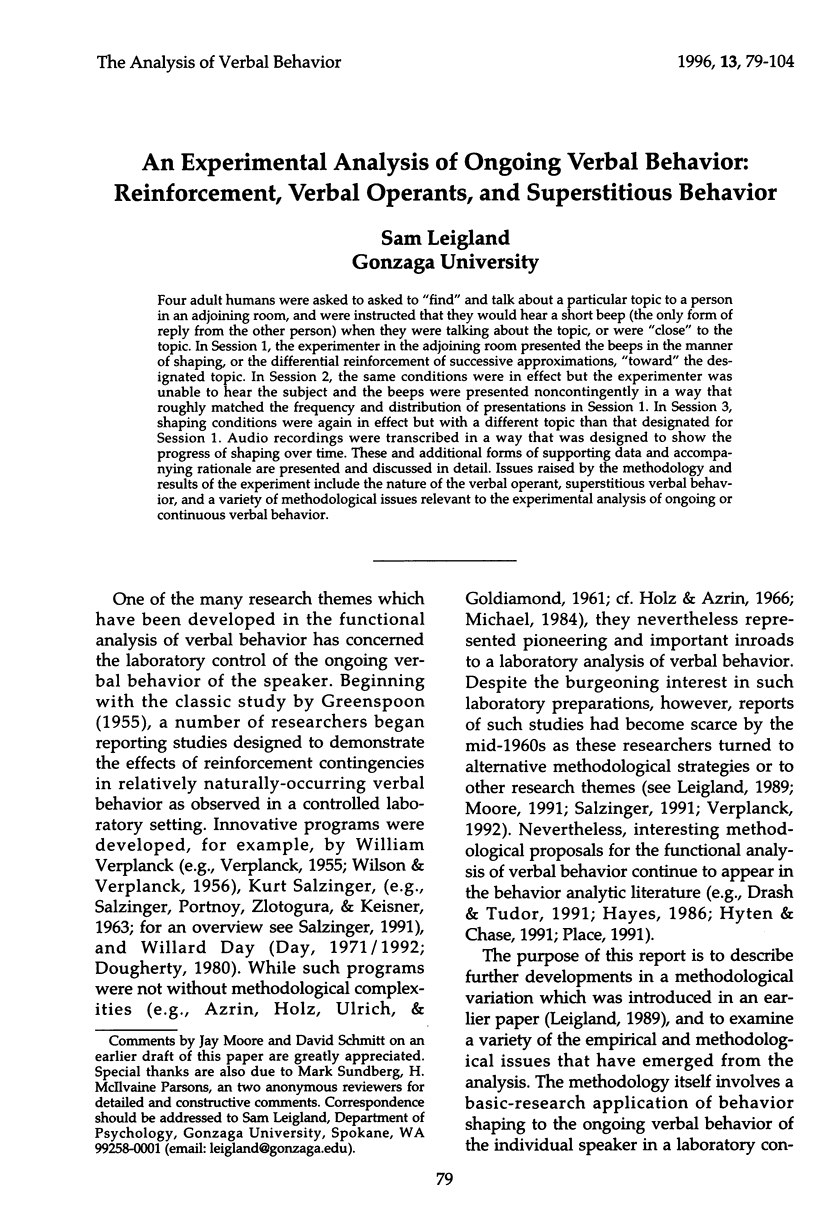
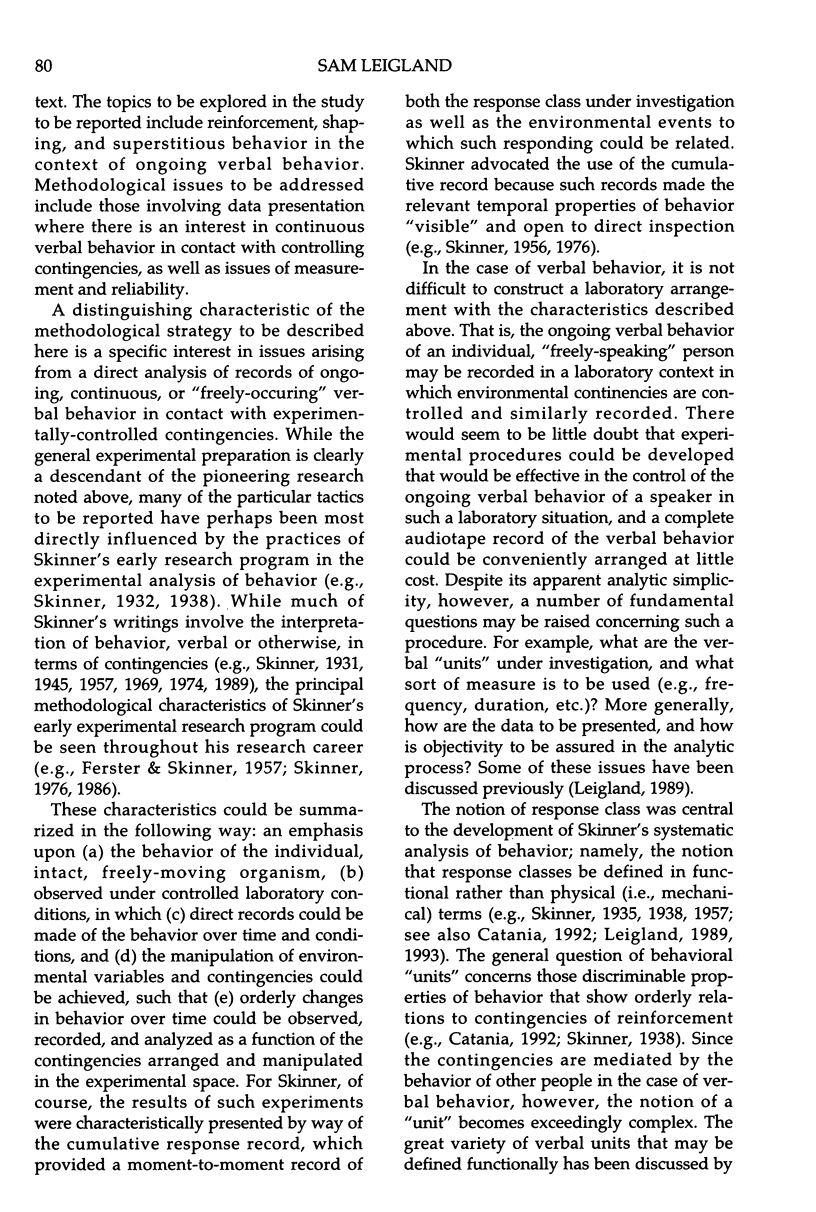
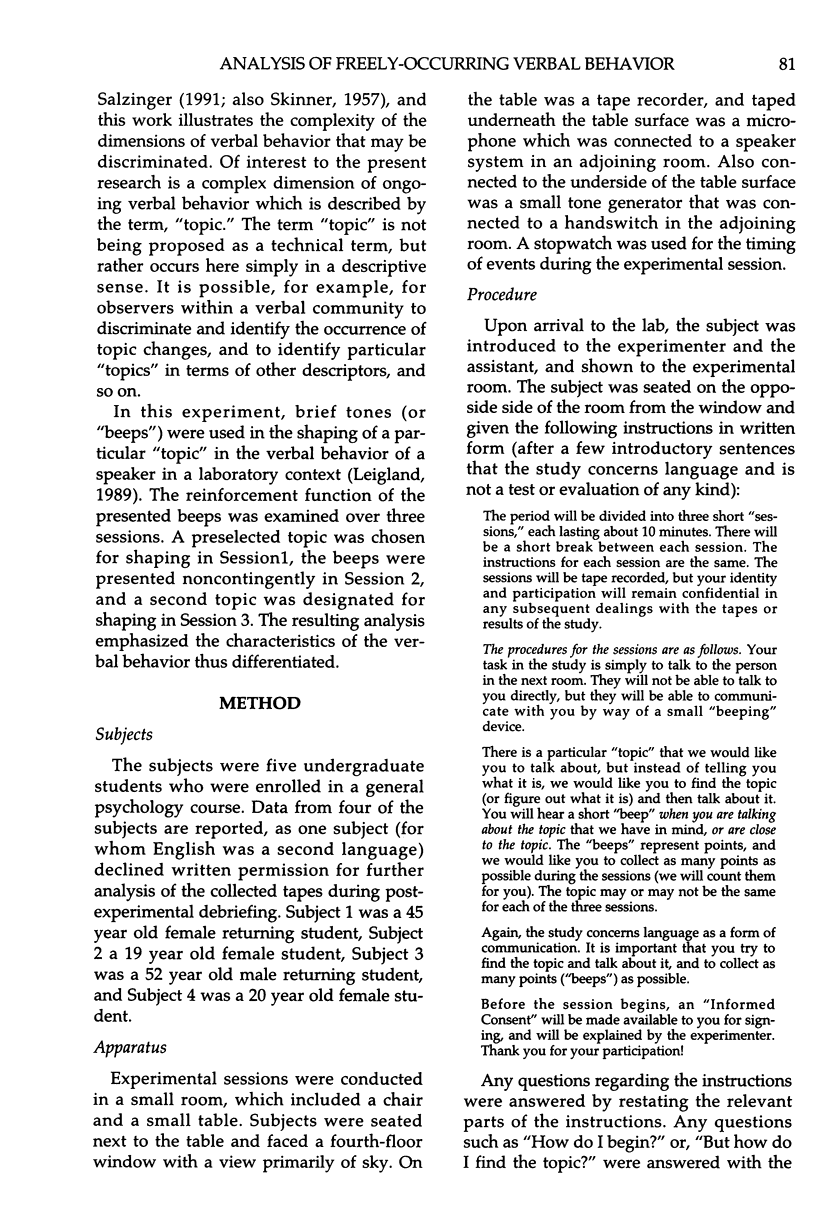
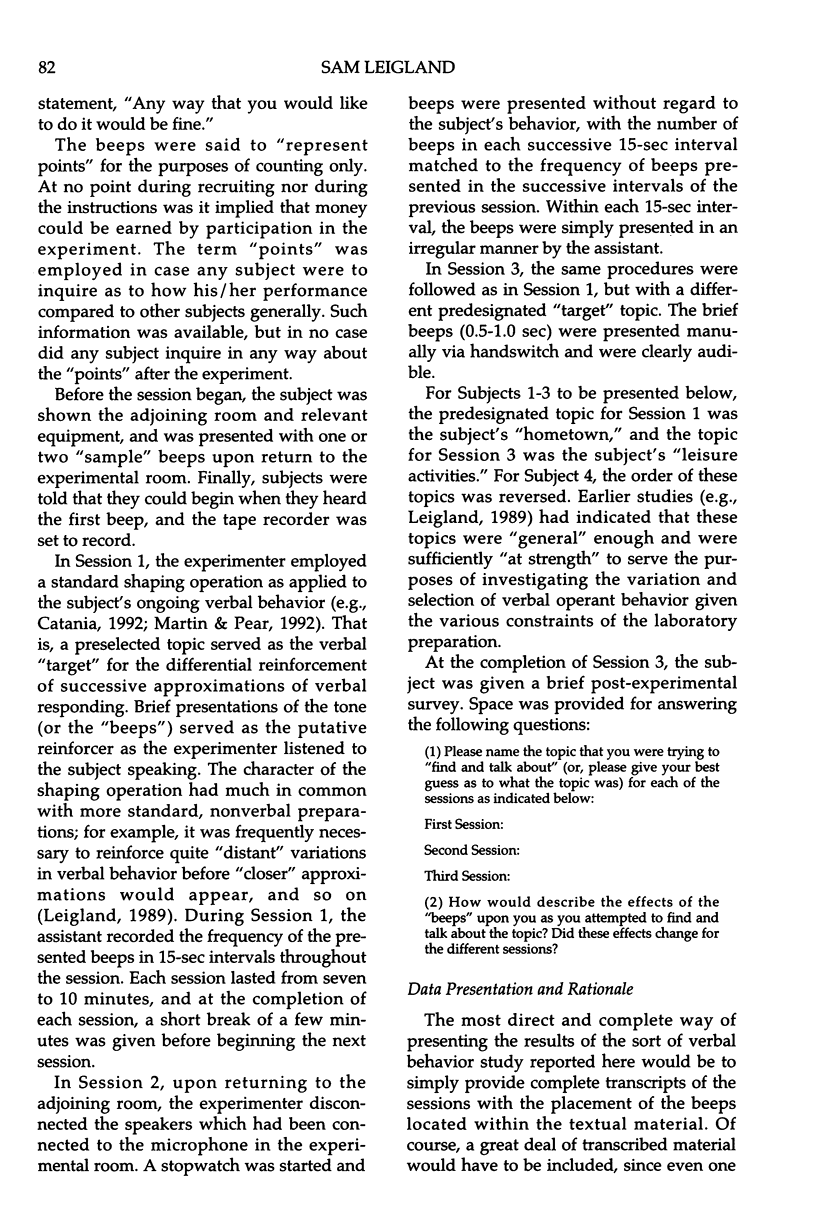
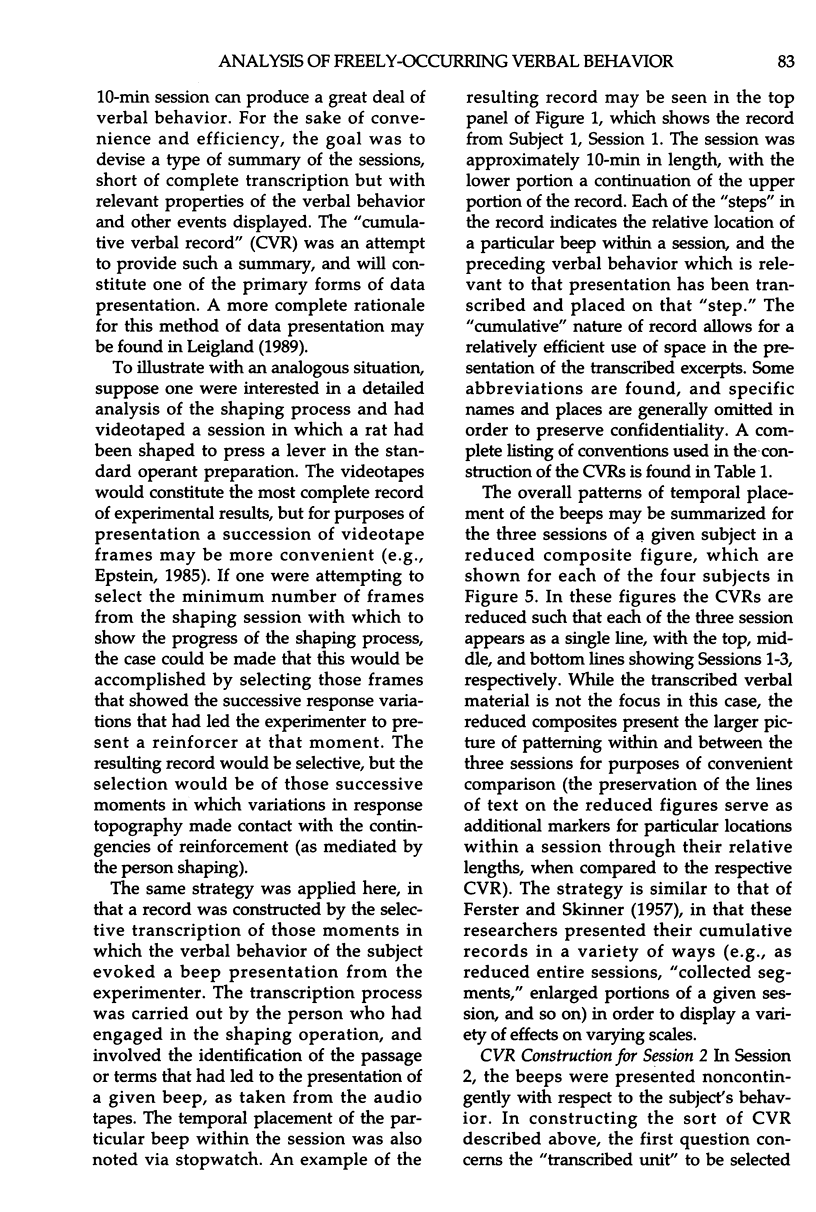
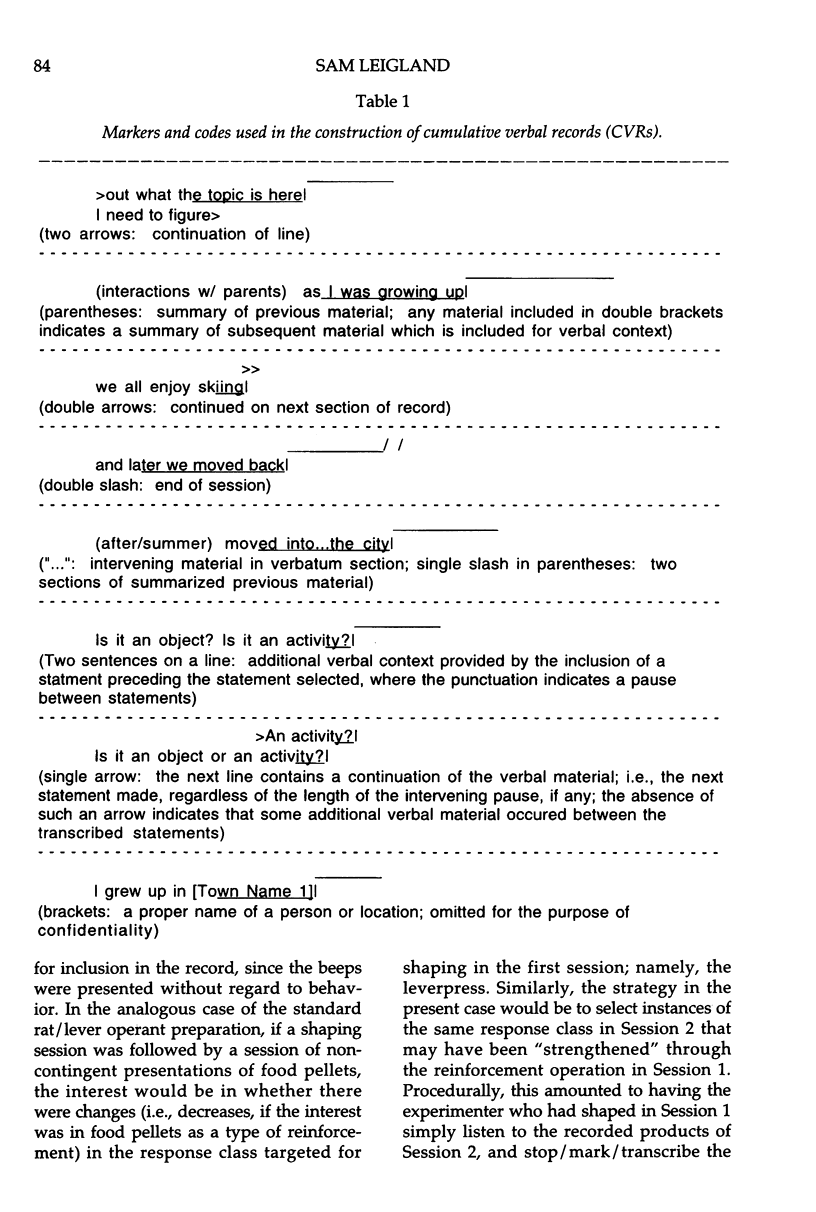
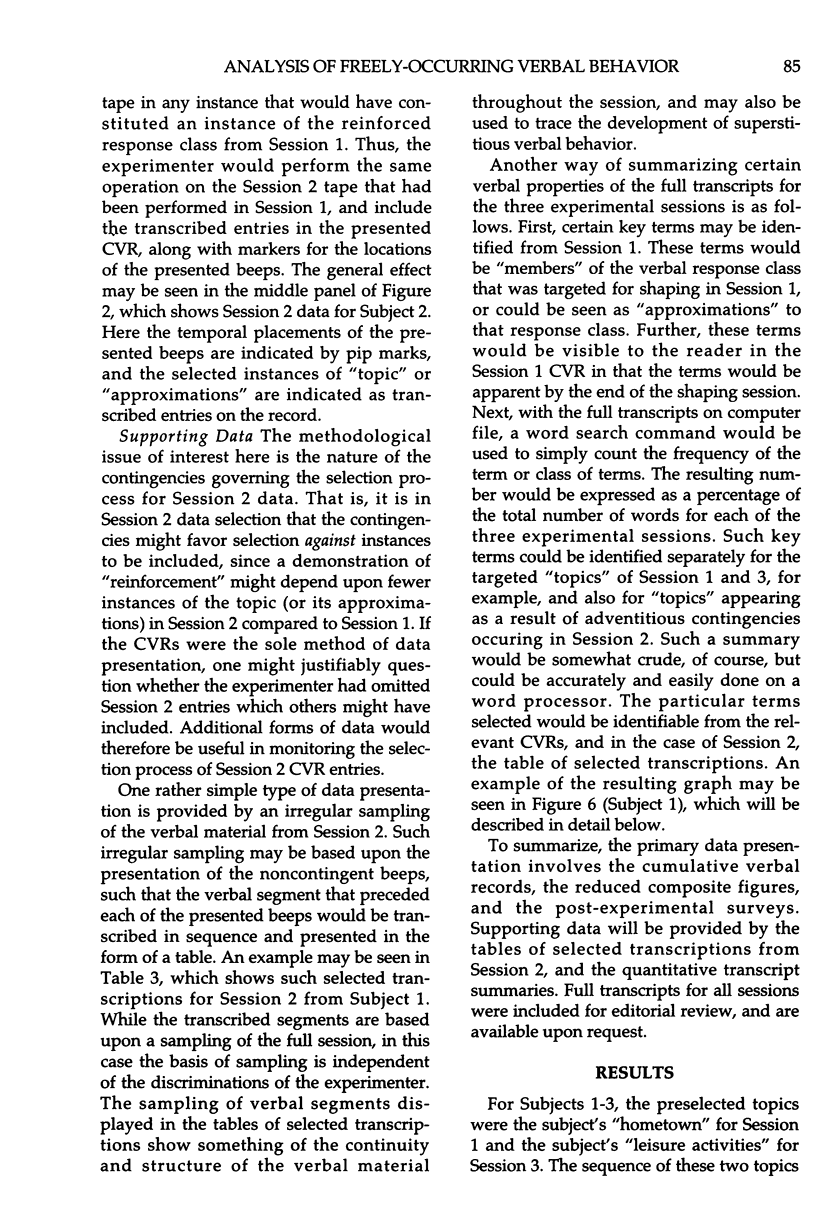
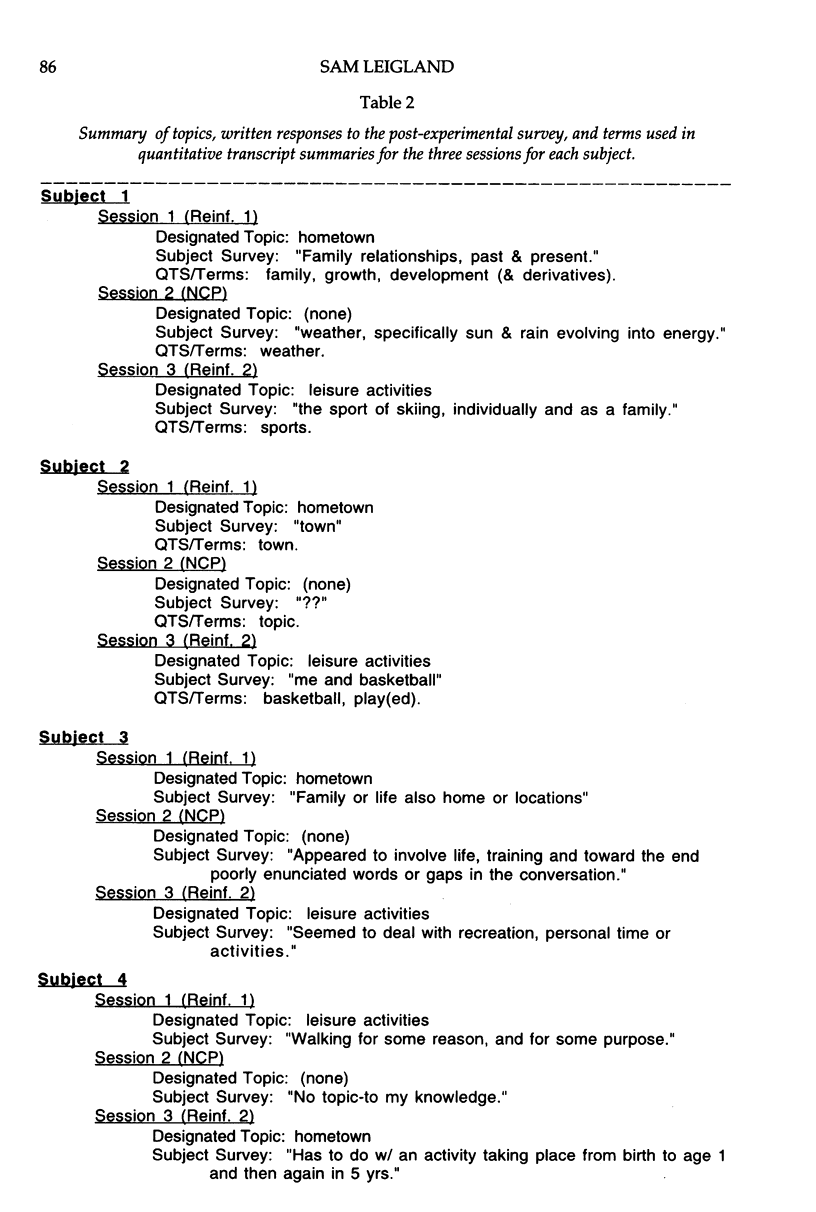
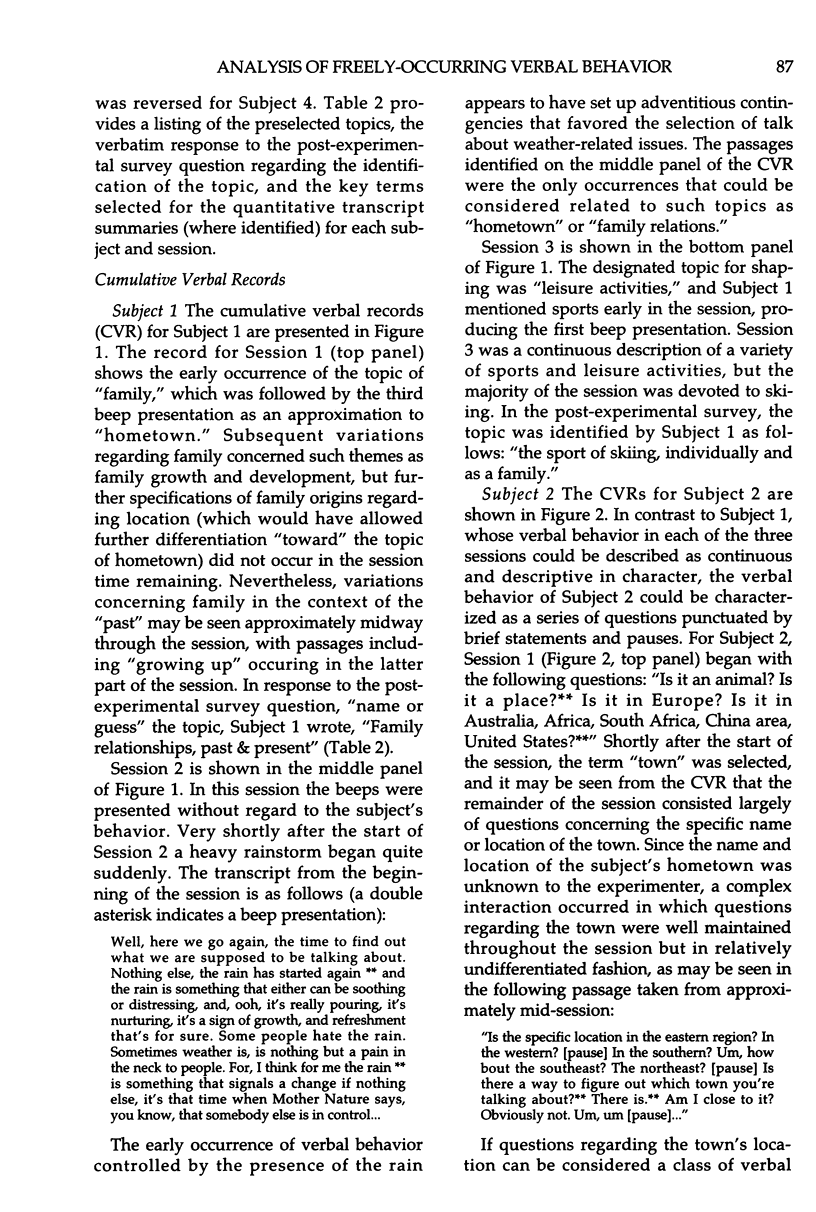
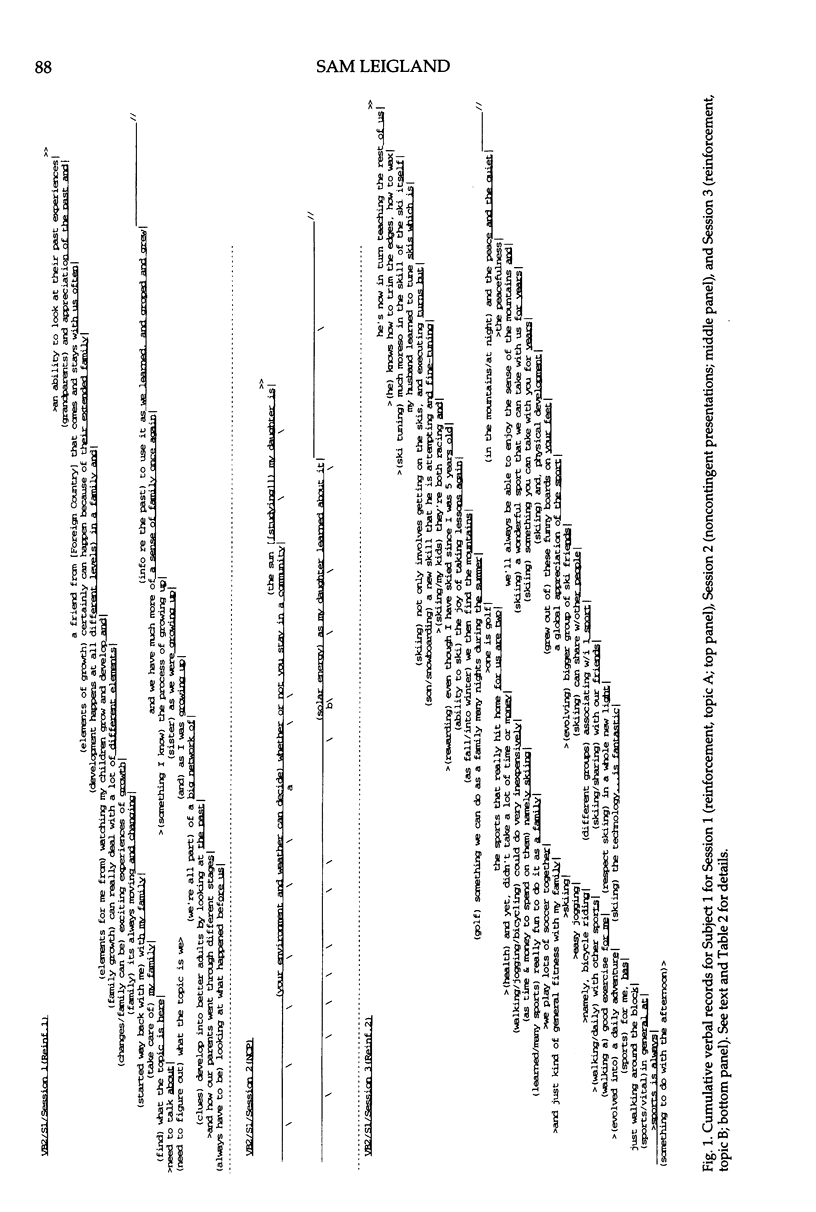
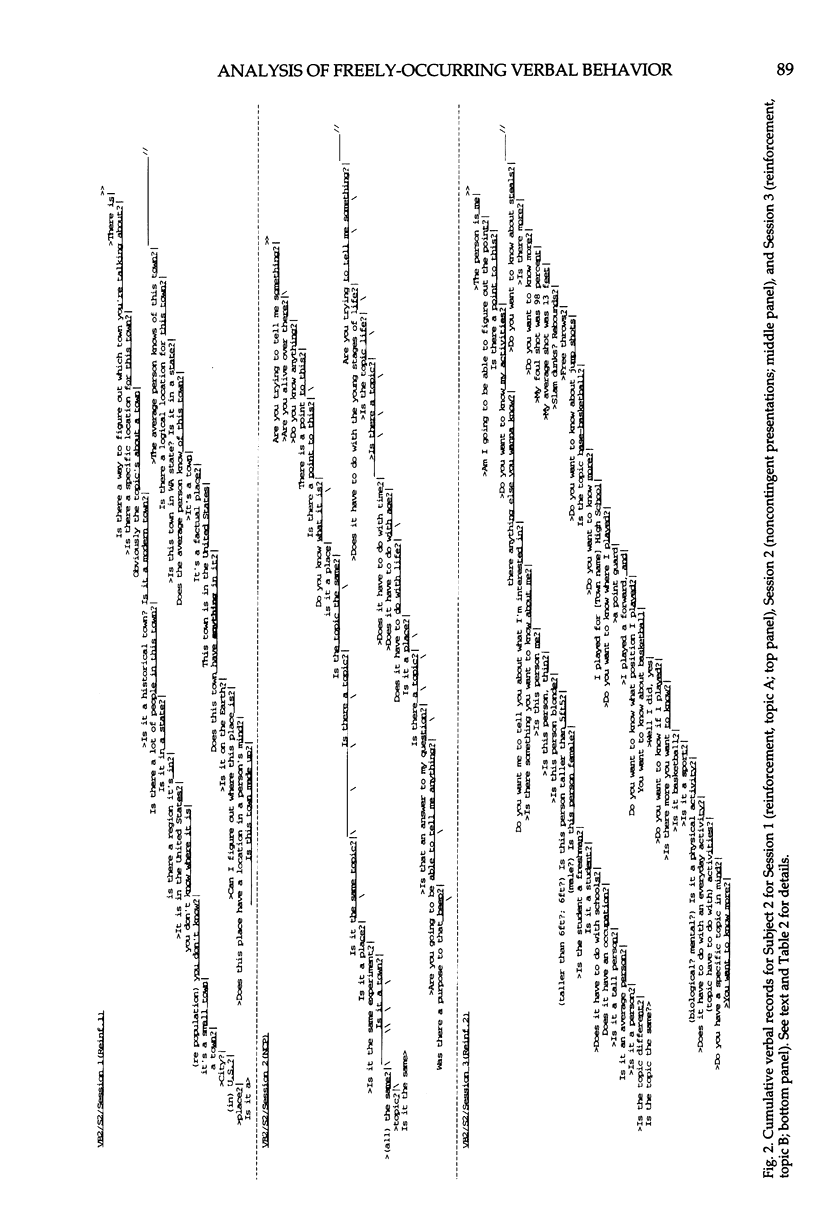
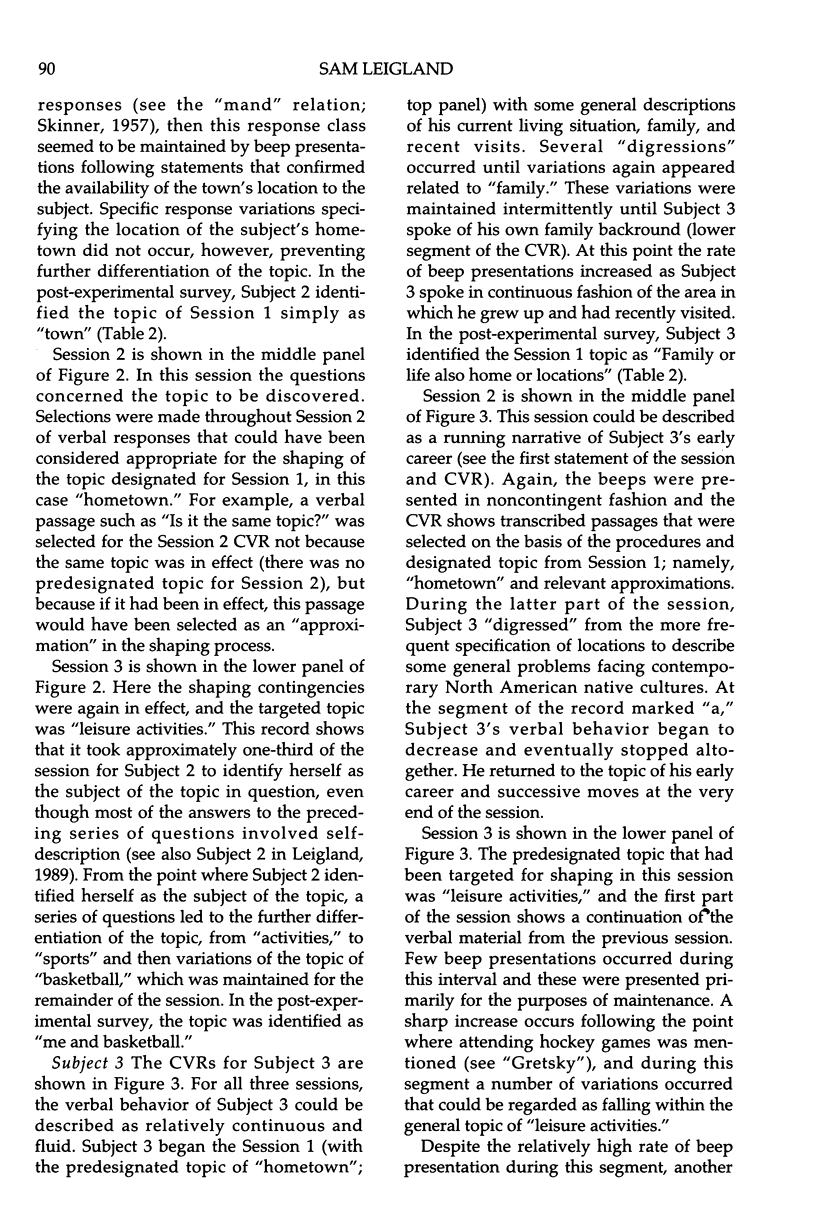
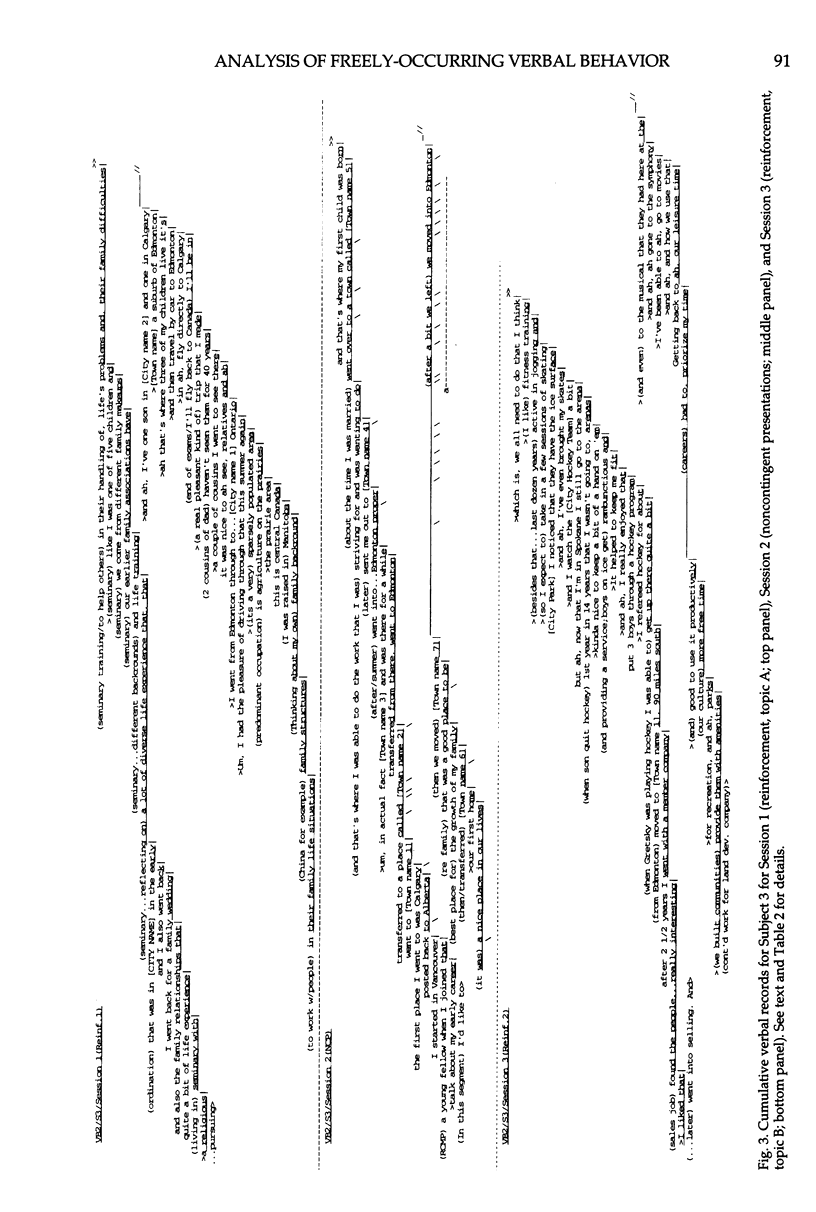
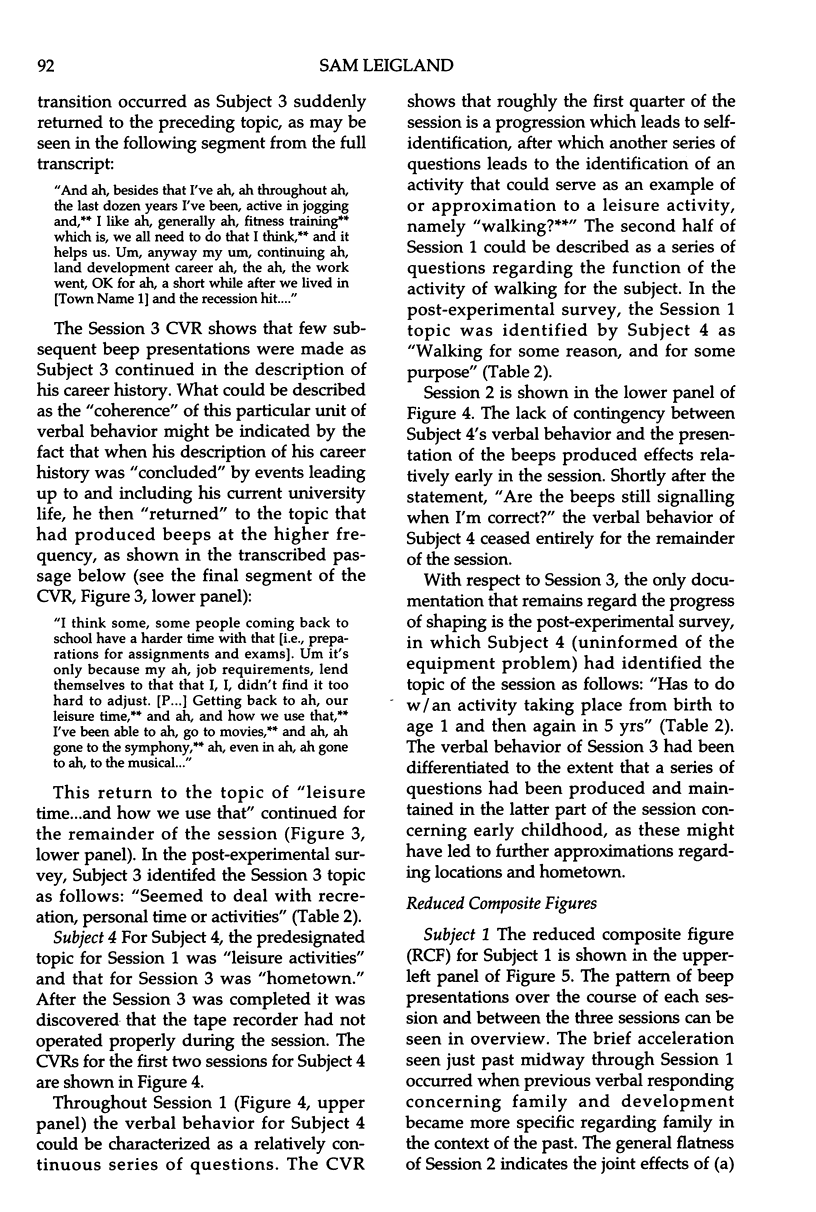
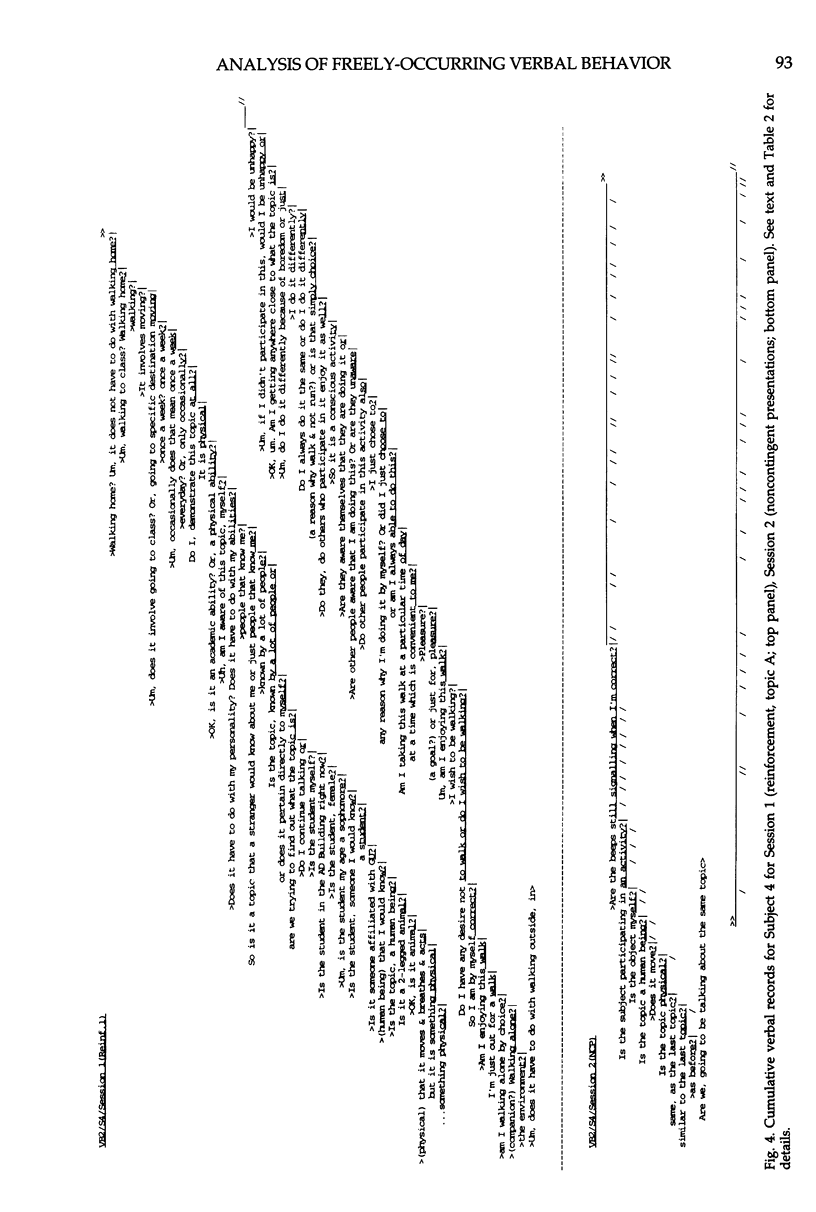
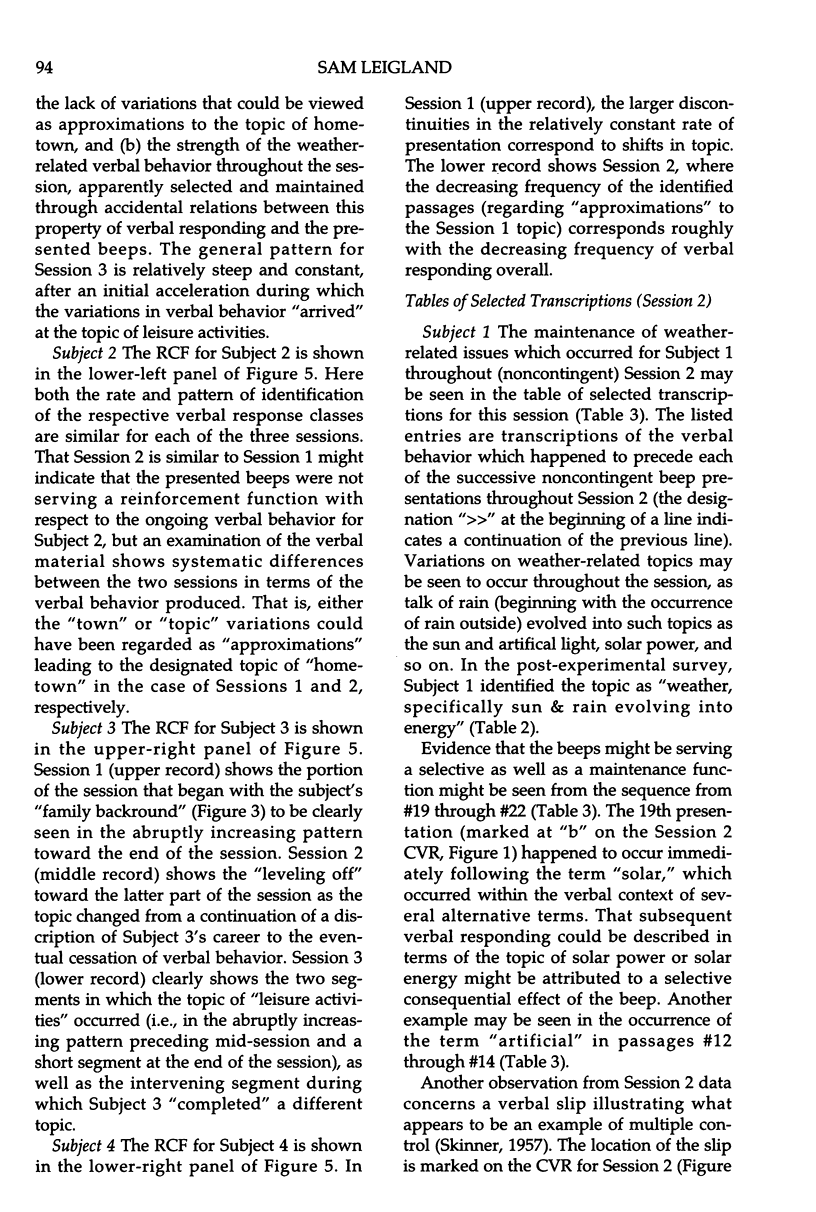
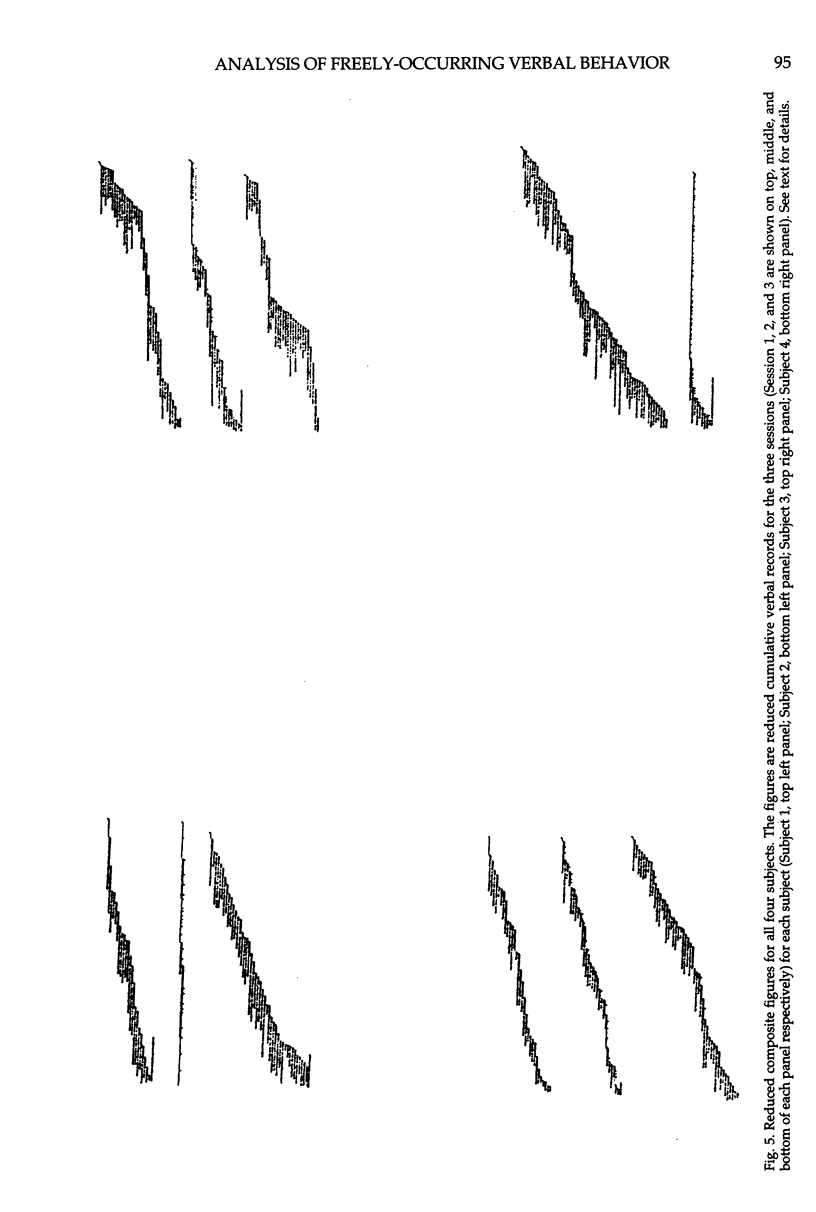
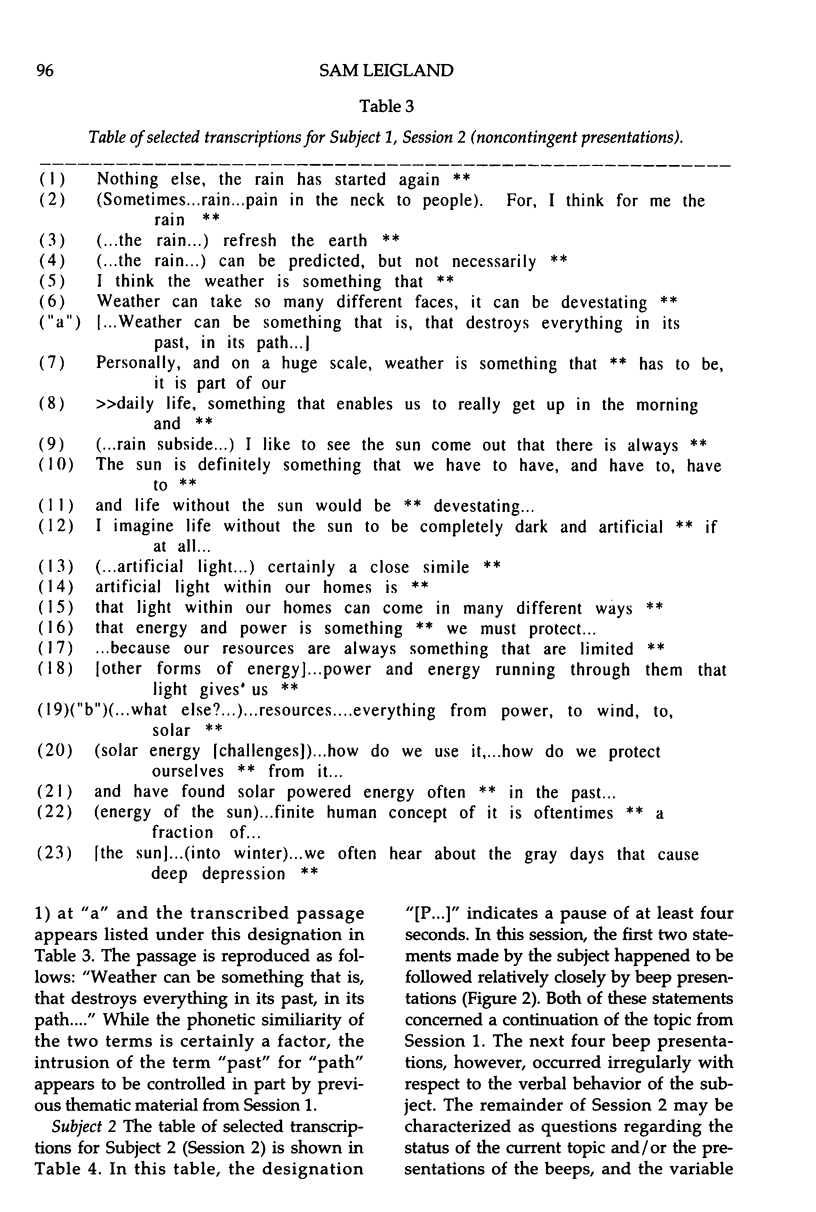
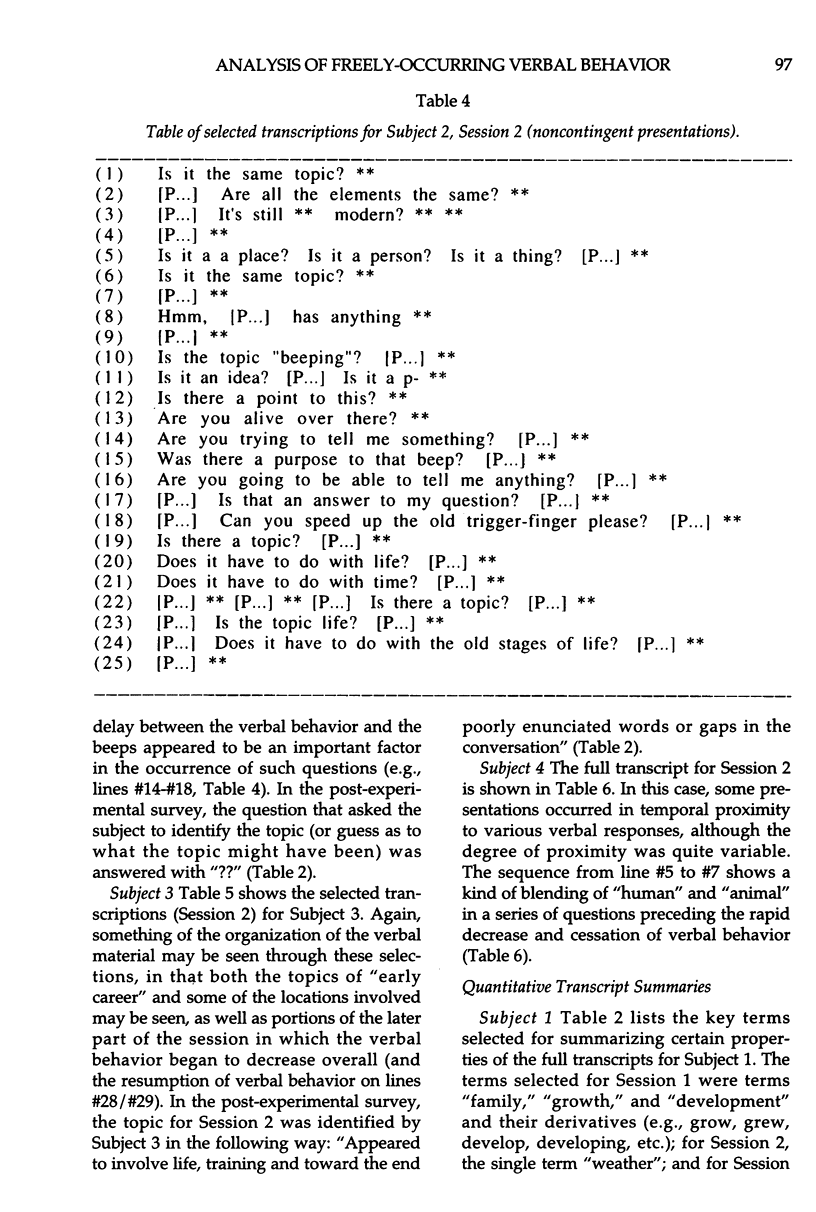
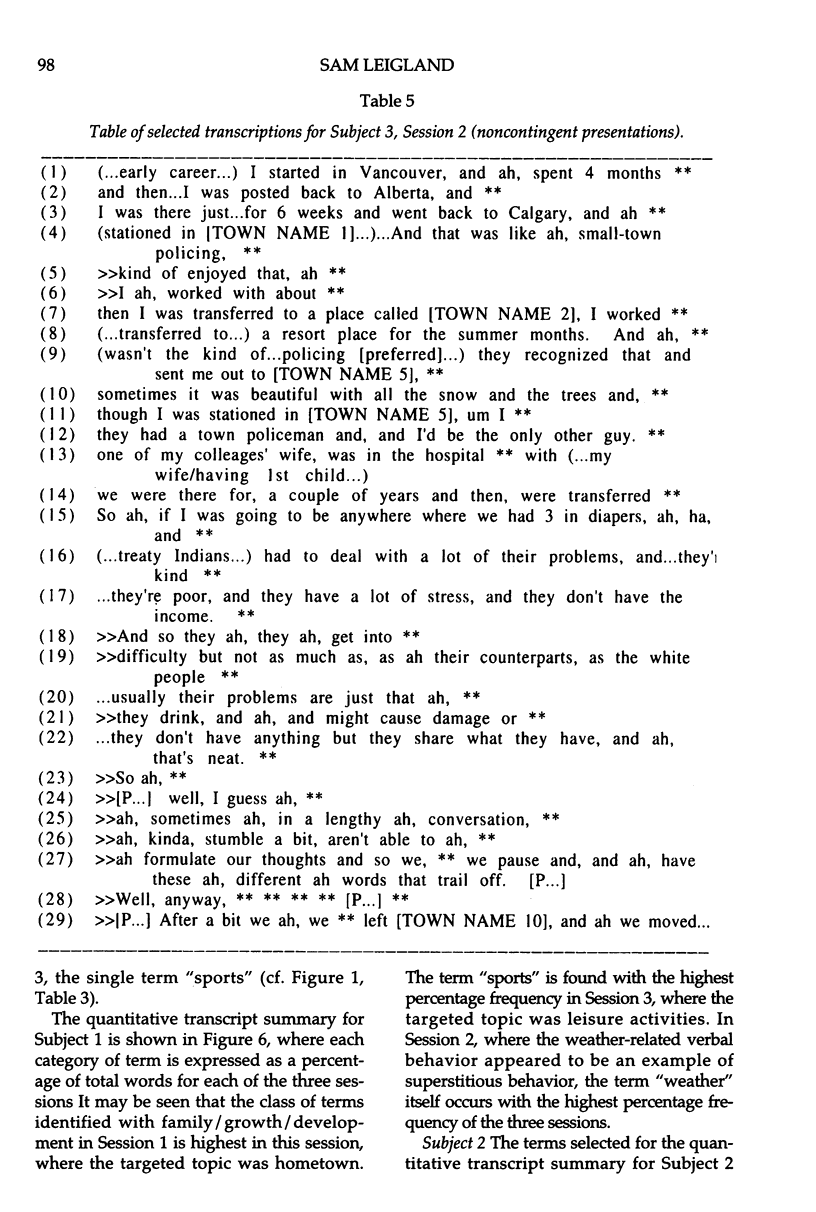

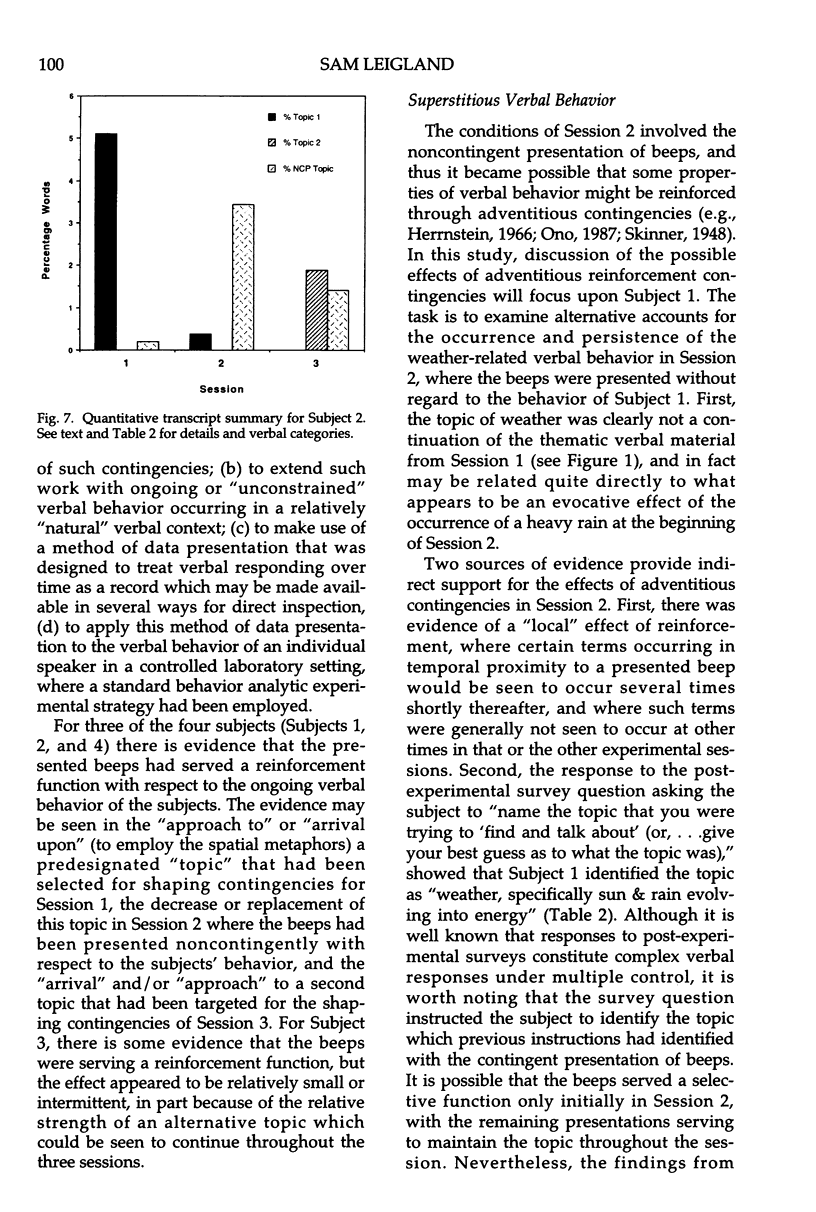
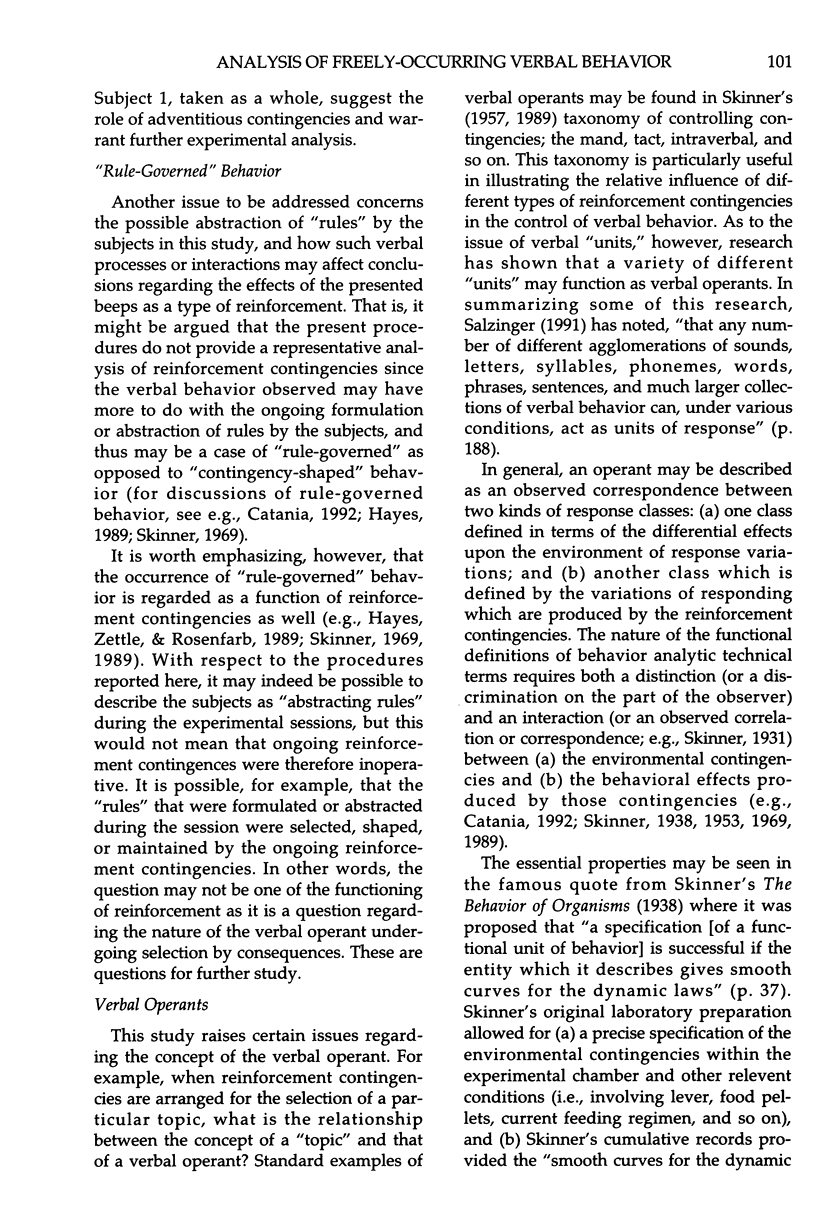
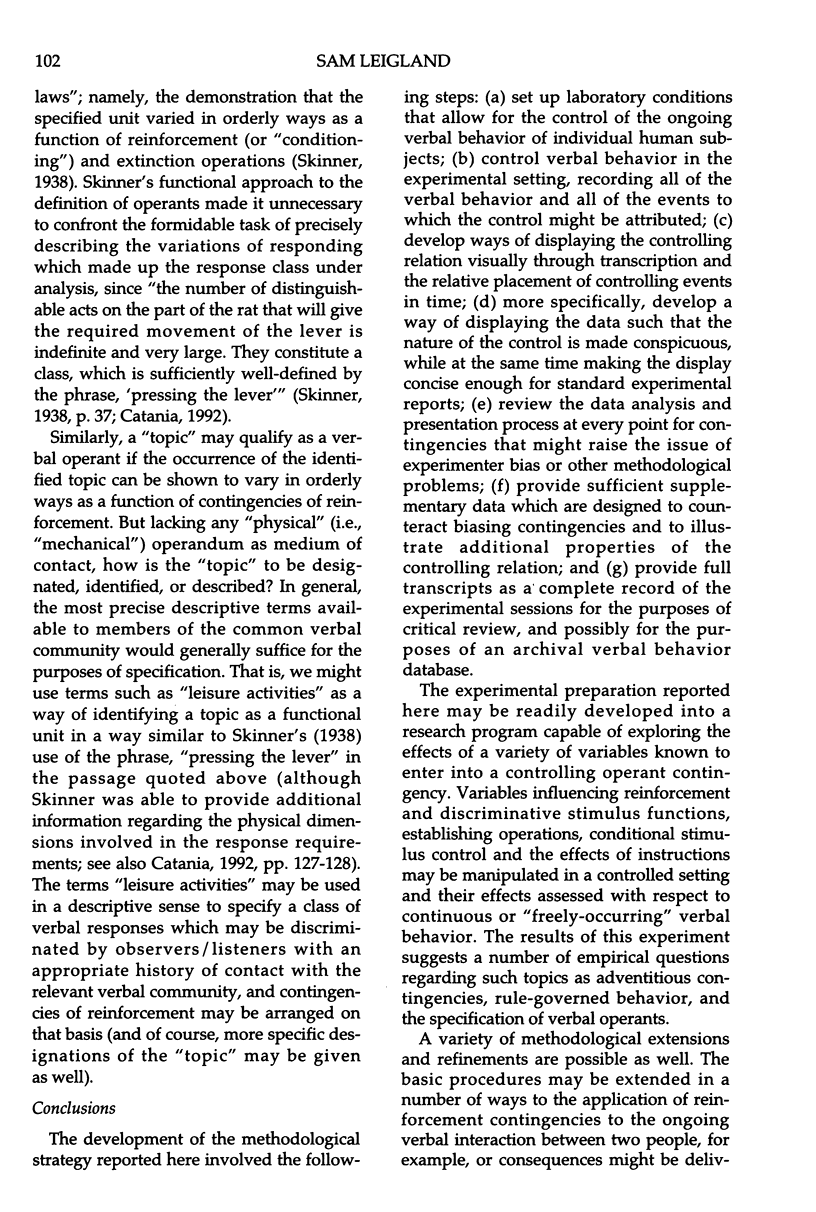
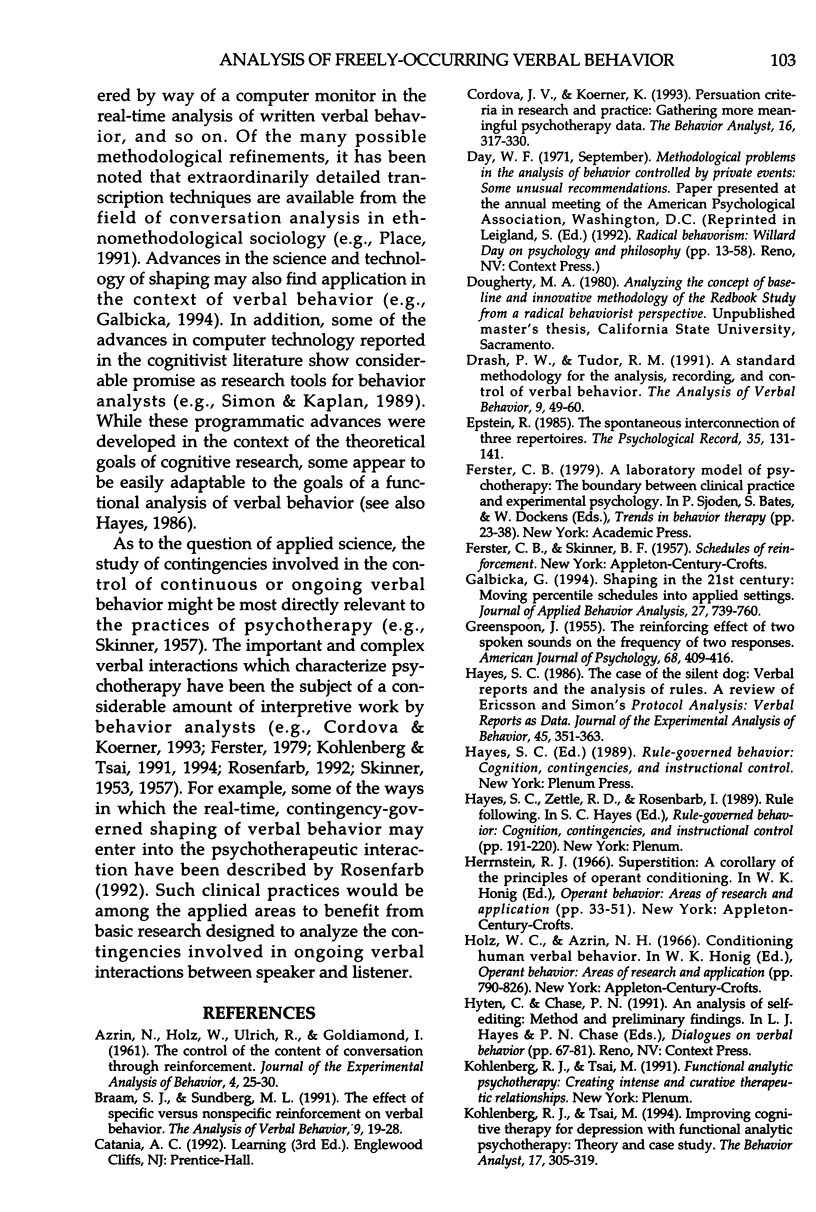
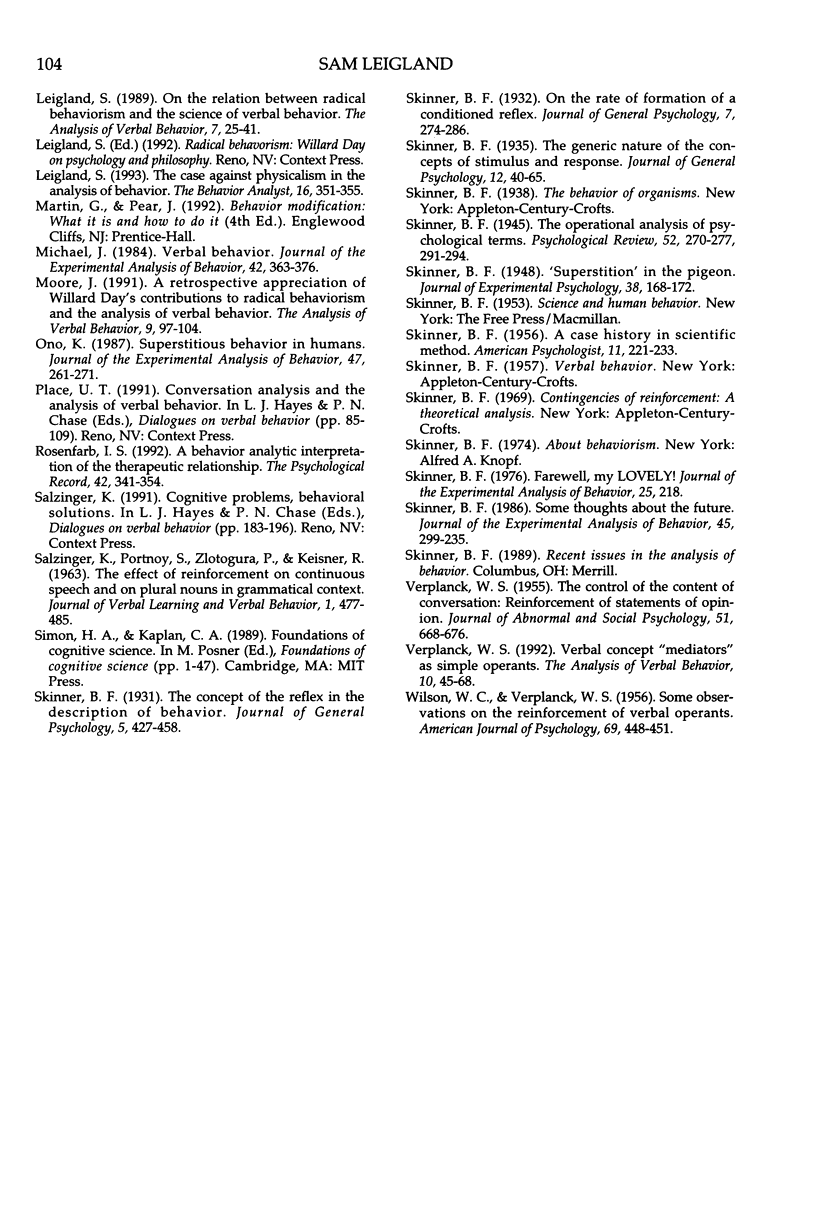
Selected References
These references are in PubMed. This may not be the complete list of references from this article.
- AZRIN N. H., HOLZ W., ULRICH R., GOLDIAMOND I. The control of the content of conversation through reinforcement. J Exp Anal Behav. 1961 Jan;4:25–30. doi: 10.1901/jeab.1961.4-25. [DOI] [PMC free article] [PubMed] [Google Scholar]
- Cordova J. V., Koerner K. Persuasion criteria in research and practice: Gathering more meaningful psychotherapy data. Behav Anal. 1993 Fall;16(2):317–330. doi: 10.1007/BF03392639. [DOI] [PMC free article] [PubMed] [Google Scholar]
- GREENSPOON J. The reinforcing effect of two spoken sounds on the frequency of two responses. Am J Psychol. 1955 Sep;68(3):409–416. [PubMed] [Google Scholar]
- Galbicka G. Shaping in the 21st century: Moving percentile schedules into applied settings. J Appl Behav Anal. 1994 Winter;27(4):739–760. doi: 10.1901/jaba.1994.27-739. [DOI] [PMC free article] [PubMed] [Google Scholar]
- Kohlenberg R. J., Tsai M. Improving cognitive therapy for depression with functional analytic psychotherapy: Theory and case study. Behav Anal. 1994 Fall;17(2):305–319. doi: 10.1007/BF03392678. [DOI] [PMC free article] [PubMed] [Google Scholar]
- Leigland S. The case against physicalism in the analysis of behavior. Behav Anal. 1993 Fall;16(2):351–355. doi: 10.1007/BF03392644. [DOI] [PMC free article] [PubMed] [Google Scholar]
- Michael J. Verbal behavior. J Exp Anal Behav. 1984 Nov;42(3):363–376. doi: 10.1901/jeab.1984.42-363. [DOI] [PMC free article] [PubMed] [Google Scholar]
- Ono K. Superstitious behavior in humans. J Exp Anal Behav. 1987 May;47(3):261–271. doi: 10.1901/jeab.1987.47-261. [DOI] [PMC free article] [PubMed] [Google Scholar]
- doi: 10.1901/jeab.1986.45-351. [DOI] [PMC free article] [Google Scholar]
- SKINNER B. F. Superstition in the pigeon. J Exp Psychol. 1948 Apr;38(2):168–172. doi: 10.1037/h0055873. [DOI] [PubMed] [Google Scholar]
- Skinner B. F. Farewell, My LOVELY! J Exp Anal Behav. 1976 Mar;25(2):218–218. doi: 10.1901/jeab.1976.25-218. [DOI] [PMC free article] [PubMed] [Google Scholar]
- Skinner B. F. Some thoughts about the future. J Exp Anal Behav. 1986 Mar;45(2):229–235. doi: 10.1901/jeab.1986.45-229. [DOI] [PMC free article] [PubMed] [Google Scholar]
- VERPLANCK W. S. The control of the content of conversation: reinforcement of statements of opinion. J Abnorm Psychol. 1955 Nov;51(3):668–676. doi: 10.1037/h0046514. [DOI] [PubMed] [Google Scholar]
- VERPLANCK W. S., WILSON W. C. Some observations on the reinforcement of verbal operants. Am J Psychol. 1956 Sep;69(3):448–451. [PubMed] [Google Scholar]


